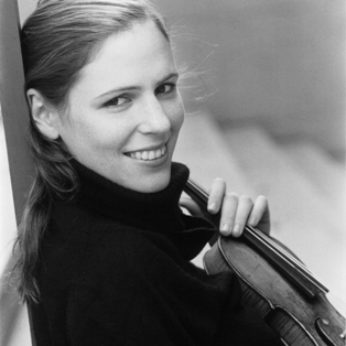Composer: Ferrucio Busoni (b. 1866 - d. 1924)
Performance date: 27/06/2014
Venue: Bantry Library
Composition Year: 1898
Duration: 00:30:09
Recording Engineer: Richard McCullough, RTE
Instrumentation: 2vn, va, vc
Instrumentation Category:Duo
Artists:
Nurit Stark -
[violin]
Cédric Pescia -
[piano]

Like Enescu, Busoni
was a composer, whose brilliance as a performer tended to overshadow his genius
as a composer. Busoni has been described as a
magus-like musician who hovered over the early twentieth century like a spider
in his web. A Tuscan of Corsican and German descent, a resident variously of
Trieste, Vienna, Leipzig, Helsinki, Moscow, New York, Zurich and Berlin, he was
a cosmopolitan in a nationalist age, a pragmatist in an era of aesthetic
absolutism. He even reprimanded Schoenberg for rejecting the old while
embracing the new.
This majestic and
overwhelming sonata was composed at the request of a violinist friend in that
hyper-active fin de siècle period
that saw the late flowering of Romanticism, although Busoni refers back to
Beethoven and Bach rather than to his contemporaries. All commentators point to
its structural similarity to Beethoven’s E major Piano Sonata Op.109 with its
bipolar Vivace/Adagio opening movement,
a brief Prestissimo Scherzo and a massive concluding set of variations, but
there the similarities end. Bach, however, features prominently in the
extraordinary Finale with the chorale theme, Wie wohl ist mir, from the second in the
Anna Magdalena Bach Notebook.
The sonata opens with solemn
introductory piano chords marked Langsam,
leading to the violin’s entry and a glorious, long-breathed melody set over subtle
ebbs and pauses in the piano part. This lyrical texture eventually gives way to
one of constant motion propelled by rising and falling arpeggios in the piano.
A third section with a powerful dotted rhythm briefly takes over but settles
back into recapitulating the earlier material.
The electrifying Presto borrows a theme
from the opening movement, which the violin treats with driving nervous energy,
while the piano traverses the keyboard with playful gestures. This leads
directly to the Andante piuttosto grave which acts as a bridge to the variations
finale while recalling, like a memory, the
theme from the Presto. This slow pensive introduction prepares the way for the
stately announcement of the Bach chorale by the piano. The first three
variations, including a lively march, follow familiar patterns, while the
fourth follows convention by shifting to the minor key but surprises at the end
with the inclusion of Busoni’s dirge-like Death
motif. The fifth variation concludes with a long crescendo leading to the
magnificent Allegro deciso, un poco
maestoso. The music calms for the coda recollecting earlier themes before returning
to the opening chords of the entire sonata, recast as a benediction.
Copyright © 2024 West Cork Music. All rights reserved.
Designed and developed by Matrix Internet